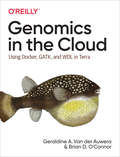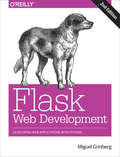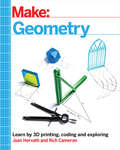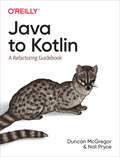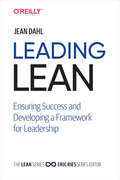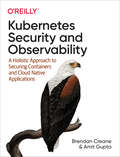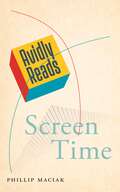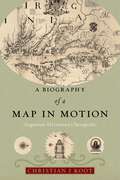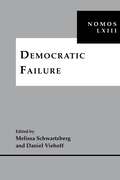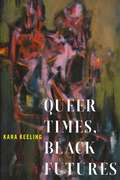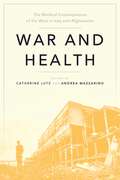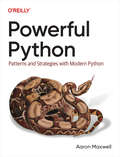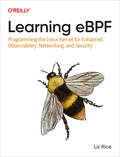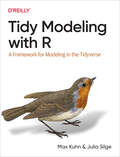- Table View
- List View
Genomics in the Cloud: Using Docker, GATK, and WDL in Terra
by Geraldine A. Van der Auwera Brian D. O'ConnorData in the genomics field is booming. In just a few years, organizations such as the National Institutes of Health (NIH) will host 50+ petabytesâ??or over 50 million gigabytesâ??of genomic data, and theyâ??re turning to cloud infrastructure to make that data available to the research community. How do you adapt analysis tools and protocols to access and analyze that volume of data in the cloud?With this practical book, researchers will learn how to work with genomics algorithms using open source tools including the Genome Analysis Toolkit (GATK), Docker, WDL, and Terra. Geraldine Van der Auwera, longtime custodian of the GATK user community, and Brian Oâ??Connor of the UC Santa Cruz Genomics Institute, guide you through the process. Youâ??ll learn by working with real data and genomics algorithms from the field.This book covers:Essential genomics and computing technology backgroundBasic cloud computing operationsGetting started with GATK, plus three major GATK Best Practices pipelinesAutomating analysis with scripted workflows using WDL and CromwellScaling up workflow execution in the cloud, including parallelization and cost optimizationInteractive analysis in the cloud using Jupyter notebooksSecure collaboration and computational reproducibility using Terra
Implementing MLOps in the Enterprise: A Production-First Approach
by Noah Gift Yaron HavivWith demand for scaling, real-time access, and other capabilities, businesses need to consider building operational machine learning pipelines. This practical guide helps your company bring data science to life for different real-world MLOps scenarios. Senior data scientists, MLOps engineers, and machine learning engineers will learn how to tackle challenges that prevent many businesses from moving ML models to production.Authors Yaron Haviv and Noah Gift take a production-first approach. Rather than beginning with the ML model, you'll learn how to design a continuous operational pipeline, while making sure that various components and practices can map into it. By automating as many components as possible, and making the process fast and repeatable, your pipeline can scale to match your organization's needs.You'll learn how to provide rapid business value while answering dynamic MLOps requirements. This book will help you:Learn the MLOps process, including its technological and business valueBuild and structure effective MLOps pipelinesEfficiently scale MLOps across your organizationExplore common MLOps use casesBuild MLOps pipelines for hybrid deployments, real-time predictions, and composite AIBuild production applications with LLMs and Generative AI, while reducing risks, increasing the efficiency, and fine tuning modelsLearn how to prepare for and adapt to the future of MLOpsEffectively use pre-trained models like HuggingFace and OpenAI to complement your MLOps strategy
Flask Web Development: Developing Web Applications with Python
by Miguel GrinbergTake full creative control of your web applications with Flask, the Python-based microframework. With the second edition of this hands-on book, youâ??ll learn Flask from the ground up by developing a complete, real-world application created by author Miguel Grinberg. This refreshed edition accounts for important technology changes that have occurred in the past three years.Explore the frameworkâ??s core functionality, and learn how to extend applications with advanced web techniques such as database migrations and an application programming interface. The first part of each chapter provides you with reference and background for the topic in question, while the second part guides you through a hands-on implementation.If you have Python experience, youâ??re ready to take advantage of the creative freedom Flask provides. Three sections include:A thorough introduction to Flask: explore web application development basics with Flask and an application structure appropriate for medium and large applicationsBuilding Flasky: learn how to build an open source blogging application step-by-step by reusing templates, paginating item lists, and working with rich textGoing the last mile: dive into unit testing strategies, performance analysis techniques, and deployment options for your Flask application
Make: Learn by coding, 3D printing and building
by Joan Horvath Rich CameronGeometry, of all the branches of mathematics, is the one that is most easily visualized by making something. However, it is all too easy to reduce it to reams of formulas to memorize and proofs to replicate. This book aims to take geometry back to its practical roots with 3D printed models and puzzles as well as demonstrations with household objects like flashlights and paper towel tubes.This is not a traditional geometry textbook, but rather builds up understanding of geometry concepts while also bringing in elements of concepts normally learned much later. Some of the models are counterintuitive, and figuring out how and why they work will both entertain and give insights. Two final chapters suggesting open-ended projects in astronomy and physics, and art and architecture, allow for deeper understanding and integration of the learning in the rest of the book.
Java to Kotlin: A Refactoring Guidebook
by Duncan McGregor Nat PryceIt takes a week to travel the 8,000 miles overland from Java to Kotlin. If you're an experienced Java developer who has tried the Kotlin language, you were probably productive in about the same time.You'll have found that they do things differently in Kotlin, though. Nullability is important, collections are different, and classes are final by default. Kotlin is more functional, but what does that mean, and how should it change the way that you program? And what about all that Java code that you still have to support?Your tour guides Duncan and Nat first made the trip in 2015, and they've since helped many teams and individuals follow in their footsteps. Travel with them as they break the route down into legs like Optional to Nullable, Beans to Values, and Open to Sealed Classes. Each explains a key concept and then shows how to refactor production Java to idiomatic Kotlin, gradually and safely, while maintaining interoperability.The resulting code is simpler, more expressive, and easier to change. By the end of the journey, you'll be confident in refactoring Java to Kotlin, writing Kotlin from scratch, and managing a mixed language codebase as it evolves over time.
Leading Lean: Ensuring Success and Developing a Framework for Leadership
by Jean DahlCompanies from startups to corporate giants face massive amounts of disruption today. Now more than ever, organizations need nimble and responsive leaders who know how to exploit the opportunities that change brings. In this insightful book, Jean Dahl, a senior executive and expert in the Lean mindset and its methods, demonstrates why you need to embrace Modern Lean principles and thinking to redefine leadership in this age of digital disruption in order to continuously evolve the Lean enterprise.Drawing on nearly three decades of corporate and consulting experience, Ms. Dahl lays out a new holistic framework for developing Modern Lean leaders. Through personal experiences and compellingreal-world case studies, she explains specific steps necessary for you and your company to proactively understand and respond to change.Understand the leadership challenges Lean leaders face in our 21st century global economyExplore the six dimensions of the Modern Lean Framework™Learn and apply the nine steps necessary to become a Lean leaderUse Modern Lean methods to build a culture of continuous learning that can be sustained and maintained within your organizationSeize competitive advantage by embracing Modern Lean to tbuild an enterprise that understands how to respond to disruption
Kubernetes Security and Observability: A Holistic Approach to Securing Containers and Cloud Native Applications
by Amit Gupta Brendan CreaneSecuring, observing, and troubleshooting containerized workloads on Kubernetes can be daunting. It requires a range of considerations, from infrastructure choices and cluster configuration to deployment controls and runtime and network security. With this practical book, you'll learn how to adopt a holistic security and observability strategy for building and securing cloud native applications running on Kubernetes.Whether you're already working on cloud native applications or are in the process of migrating to its architecture, this guide introduces key security and observability concepts and best practices to help you unleash the power of cloud native applications. Authors Brendan Creane and Amit Gupta from Tigera take you through the full breadth of new cloud native approaches for establishing security and observability for applications running on Kubernetes.Learn why you need a security and observability strategy for cloud native applications and determine your scope of coverageUnderstand key concepts behind the book's security and observability approachExplore the technology choices available to support this strategyDiscover how to share security responsibilities across multiple teams or rolesLearn how to architect Kubernetes security and observability for multicloud and hybrid environments
Avidly Reads Screen Time
by Phillip MaciakWhat happens when screen time is all the time?In the early 1990s, the phrase “screen time” emerged to scare parents about the dangers of too much TV for kids. Screen time was something to fret over, police, and judge in a low-grade moral panic. Now, “screen time” has become a metric not only for good parenting, but for our adult lives as well. There’s even an app for it! In the streaming era—and with streaming made nearly ubiquitous during COVID-19—almost every aspect of our day is mediated by these bright surfaces. Whether it was ever the real villain in the first place, or merely a convenient proxy for unaddressed familial, social, and institutional failures, screen time is now all the time.Avidly Reads Screen Time is a funny, insightful work of cultural criticism and history about how we define screens, and how they now define us. From Mad Men to iCarly, Vine to FaceTime, binge-watching to doom-scrolling, Phillip Maciak leads us on a sometimes heartwarming, sometimes harrowing tour of the media that brings us together and tears us apart.
Women of the Street: How the Criminal Justice-Social Services Alliance Fails Women in Prostitution
by Susan Dewey Tonia St. GermainExplores encounters between those who make their living by engaging in street-based prostitution and the criminal justice and social service workers who try to curtail itWorking together every day, the lives of sex workers, police officers, public defenders, and social service providers are profoundly intertwined, yet their relationships are often adversarial and rooted in fundamentally false assumptions. The criminal justice-social services alliance operates on the general belief that the women they police and otherwise regulate choose sex work as a result of traumatization, rather than acknowledging the fact that socioeconomic realities often inform their choices.Drawing on extraordinarily rich ethnographic research, including interviews with over one hundred street-involved women and dozens of criminal justice and social service professionals, Women of the Street argues that despite the intimate knowledge these groups have about each other, measures designed to help these women consistently fail because they do not take into account false assumptions about street life, homelessness, drug use and sex trading. Reaching beyond disciplinary silos by combining the analysis of an anthropologist and a legal scholar, the book offers an evidence-based argument for the decriminalization of prostitution.
A Biography of a Map in Motion: Augustine Herrman's Chesapeake
by Christian J. KootReveals the little known history of one of history’s most famous maps – and its makerTucked away in a near-forgotten collection, Virginia and Maryland as it is Planted and Inhabited is one of the most extraordinary maps of colonial British America. Created by a colonial merchant, planter, and diplomat named Augustine Herrman, the map pictures the Mid-Atlantic in breathtaking detail, capturing its waterways, coastlines, and communities. Herrman spent three decades travelling between Dutch New Amsterdam and the English Chesapeake before eventually settling in Maryland and making this map. Although the map has been reproduced widely, the history of how it became one of the most famous images of the Chesapeake has never been told. A Biography of a Map in Motion uncovers the intertwined stories of the map and its maker, offering new insights into the creation of empire in North America. The book follows the map from the waterways of the Chesapeake to the workshops of London, where it was turned into a print and sold. Transported into coffee houses, private rooms, and government offices, Virginia and Maryland became an apparatus of empire that allowed English elites to imaginatively possess and accurately manage their Atlantic colonies. Investigating this map offers the rare opportunity to recapture the complementary and occasionally conflicting forces that created the British Empire. From the colonial and the metropolitan to the economic and the political to the local and the Atlantic, this is a fascinating exploration of the many meanings of a map, and how what some saw as establishing a sense of local place could translate to forging an empire.
God Mocks: A History of Religious Satire from the Hebrew Prophets to Stephen Colbert
by Terry LindvallWinner of the 2016 Religious Communication Association Book of the Year AwardIn God Mocks, Terry Lindvall ventures into the muddy and dangerous realm of religious satire, chronicling its evolution from the biblical wit and humor of the Hebrew prophets through the Roman Era and the Middle Ages all the way up to the present. He takes the reader on a journey through the work of Chaucer and his Canterbury Tales, Cervantes, Jonathan Swift, and Mark Twain, and ending with the mediated entertainment of modern wags like Stephen Colbert. Lindvall finds that there is a method to the madness of these mockers: true satire, he argues, is at its heart moral outrage expressed in laughter. But there are remarkable differences in how these religious satirists express their outrage.The changing costumes of religious satirists fit their times. The earthy coarse language of Martin Luther and Sir Thomas More during the carnival spirit of the late medieval period was refined with the enlightened wit of Alexander Pope. The sacrilege of Monty Python does not translate well to the ironic voices of Soren Kierkegaard. The religious satirist does not even need to be part of the community of faith. All he needs is an eye and ear for the folly and chicanery of religious poseurs. To follow the paths of the satirist, writes Lindvall, is to encounter the odd and peculiar treasures who are God’s mouthpieces. In God Mocks, he offers an engaging look at their religious use of humor toward moral ends.
Democratic Failure: NOMOS LXIII (NOMOS - American Society for Political and Legal Philosophy #35)
by Melissa Schwartzberg Daniel ViehoffExplores the challenges facing democracies in the twenty-first centuryIn Democratic Failure, Melissa Schwartzberg and Daniel Viehoff bring together a distinguished group of interdisciplinary scholars in political science, law, and philosophy to explore the key questions and challenges facing democracies, both in the past and present, around the world.In ten timely essays, contributors examine the fascinating, centuries-old question of whether or not democracy can ever fulfill the promise of its ideals. Together, they explore lessons from the history of democracy, various failures of democratic representation, and more. Ultimately, this latest installment of the NOMOS series provides thought-provoking insights into how we conceptualize, measure, and address democratic erosion in our present-day world.
Queer Times, Black Futures (Sexual Cultures #30)
by Kara KeelingFinalist, 2019 Lambda Literary Award in LGBTQ StudiesA profound intellectual engagement with Afrofuturism and the philosophical questions of space and time Queer Times, Black Futures considers the promises and pitfalls of imagination, technology, futurity, and liberation as they have persisted in and through racial capitalism. Kara Keeling explores how the speculative fictions of cinema, music, and literature that center black existence provide scenarios wherein we might imagine alternative worlds, queer and otherwise. In doing so, Keeling offers a sustained meditation on contemporary investments in futurity, speculation, and technology, paying particular attention to their significance to queer and black freedom.Keeling reads selected works, such as Sun Ra’s 1972 film Space is the Place and the 2005 film The Aggressives, to juxtapose the Afrofuturist tradition of speculative imagination with the similar “speculations” of corporate and financial institutions. In connecting a queer, cinematic reordering of time with the new possibilities technology offers, Keeling thinks with and through a vibrant conception of the imagination as a gateway to queer times and black futures, and the previously unimagined spaces that they can conjure.
The Politicization of Safety: Critical Perspectives on Domestic Violence Responses (Families, Law, and Society #10)
by Jane K. StoeverA look at gun control, campus sexual assault, immigration, and more that considers the future of responses to domestic violence Domestic violence is commonly assumed to be a bipartisan, nonpolitical issue, with politicians of all stripes claiming to work to end family violence. Nevertheless, the Violence Against Women Act expired for over 500 days between 2012 and 2013 due to differences between the U.S. Senate and House, demonstrating that legal protections for domestic abuse survivors are both highly political and highly vulnerable. Racial and gender politics, the move toward criminalization, reproductive justice concerns, gun control debates, and political interests are increasingly shaping responses to domestic violence, demonstrating the need for greater consideration of the interplay of politics, domestic violence, and how the law works in people’s lives. The Politicization of Safety provides a critical historical perspective on domestic violence responses in the United States. It grapples with the ways in which child welfare systems and civil and criminal justice responses intersect, and considers the different, overlapping ways in which survivors of domestic abuse are forced to cope with institutionalized discrimination based on race, gender, sexual orientation, and immigration status. The book also examines movement politics and the feminist movement with respect to domestic violence policies. The tensions discussed in this book, similar to those involved in the #metoo movement, include questions of accountability, reckoning, redemption, healing, and forgiveness. What is the future of feminism and the movements against gender-based violence and domestic violence? Readers are invited to question assumptions about how society and the legal system respond to intimate partner violence and to challenge the domestic violence field to move beyond old paradigms and contend with larger justice issues.
War and Health: The Medical Consequences of the Wars in Iraq and Afghanistan (Anthropologies of American Medicine: Culture, Power, and Practice #4)
by Catherine Lutz and Andrea MazzarinoProvides a detailed look at how war affects human life and health far beyond the battlefield Since 2010, a team of activists, social scientists, and physicians have monitored the lives lost as a result of the US wars in Iraq, Afghanistan, and Pakistan through an initiative called the Costs of War Project. Unlike most studies of war casualties, this research looks beyond lives lost in violence to consider those who have died as a result of illness, injuries, and malnutrition that would not have occurred had the war not taken place. Incredibly, the Cost of War Project has found that, of the more than 1,000,000 lives lost in the recent US wars, a minimum of 800,000 died not from violence, but from indirect causes. War and Health offers a critical examination of these indirect casualties, examining health outcomes on the battlefield and elsewhere—in hospitals, homes, and refugee camps—both during combat and in the years following, as communities struggle to live normal lives despite decimated social services, lack of access to medical care, ongoing illness and disability, malnutrition, loss of infrastructure, and increased substance abuse. The volume considers the effect of the war on both civilians and on US service members, in war zones—where healthcare systems have been destroyed by long-term conflict—and in the United States, where healthcare is highly developed. Ultimately, it draws much-needed attention to the far-reaching health consequences of the recent US wars, and argues that we cannot go to war—and remain at war—without understanding the catastrophic effect war has on the entire ecosystem of human health.
New South African Review 2: New paths, old compromises? (New South African Review Ser.)
by Carli CoetzeeAn explanation of the New Growth Plan and alternatives to neo-liberal and capitalist development in South AfricaIn this second volume of the New South African Review, the New Growth Path adopted by the South African government in 2010 provides the basis for a dialogue about whether 'decent work' is the best solution to South Africa's problems of low economic growth and high unemployment. There are investigations into rising inequality against the backdrop of the failings of Black Economic Empowerment; 'greening the economy', with emphasis on biofuels; the crisis of acid mine drainage on the Witwatersrand; possibilities for participatory forms of government; civil society activism; transformation of the print media and the SABC; the crisis in child care in public hospitals; the relationship between the police and a township community; the problems related to the absence of legislation to govern the powers of traditional authorities over land allocation; and assessments of the state of opposition political parties and the ANC Alliance. Asking whether the New Growth Plan reflects a set of new policies or an attempt to re-dress old (com)promises in new clothes, this volume brings together different voices in debate about possibilities for alternatives to neo-liberal and capitalist development in South Africa.
Capturing the Durability of High Recycled Binder Ratio Asphalt Mixtures
by Transportation Research Board National Academies of Sciences, Engineering, and Medicine Gayle King National Cooperative Highway Research Program Biswajit Kumar Bairgi Madhav Verma Carolina Rodezno Raquel Moraes Fan Yin Nam Tran Santosh Reddy Kommidi Yong-Rak Kim Juliana Montañez Gil Edith Arámbula Mercado Amy Epps MartinSignificant economic and environmental benefits provide motivation to use more recycled asphalt materials in asphalt mixtures. NCHRP Research Report 1130: Capturing the Durability of High Recycled Binder Ratio Asphalt Mixtures, from TRB's National Cooperative Highway Research Program, provides a framework to facilitate the design of durable asphalt mixtures within the context of balanced mix design (BMD).
Electricity System Operability and Reliability Under Increasing Complexity: Proceedings of a Workshop
by Division on Engineering and Physical Sciences Board on Energy and Environmental Systems National Academies of Sciences, Engineering, and MedicineThe U.S. electricity system, known collectively as “the grid,” is increasingly integrating a complex array of distributed energy resources (DERs) such as solar panels, wind turbines, batteries, and small-scale energy generators. By harnessing a diverse range of power sources and often generating energy close to the point of use rather than only in central power plants, DERs offer unprecedented flexibility in electricity generation and management. However, the imperative to maintain and improve the operational integrity of the grid as it takes on increasing quantities of DERs represents an emerging critical issue, particularly as demand for electricity enters a period of significant growth in many places across the United States. To consider the research needs, operational standards, regulatory approaches, market incentives, and other facets relevant to ensuring the operational integrity of the grid as it integrates complex distributed elements, the National Academies of Sciences, Engineering, and Medicine convened a workshop on Electricity System Operability and Reliability under Increasing Complexity in Washington, DC, on June 17-18, 2024. The workshop convened representatives from government, industry, academia, and nongovernmental organizations to examine a variety of challenges that grid operators face in maintaining reliable and equitable electricity service, along with emerging technologies and capabilities that may impact grid operations and reliability.
Load Rating of Segmental Bridges
by Andrzej Nowak Transportation Research Board National Academies of Sciences, Engineering, and Medicine Benjamin Morris Robert Barnes Chan Yang Christopher Eamon National Cooperative Highway Research Program Eddie He John Corven Bellikoth Bhaktha Furkan Cakmak Fatmir Menkulasi Serap Hanbay Patrick Lou Hani Nassif Jacek Chmielewski Pablo Hurtado Karina PopokA segmental bridge is constructed in short sections or segments that are either precast or cast-in-place concrete. Segmental bridges were first built in the United States in the 1970s and have proven to be an efficient design for long span bridges. NCHRP Research Report 1128: Load Rating of Segmental Bridges, from TRB’s National Cooperative Highway Research Program, presents procedures for load rating of segmental bridges. The proposed recommendations were developed based on extensive review of the state of practice of the evaluation of segmental bridges and comprehensive analytical programs.
An Assessment of Selected Divisions of the National Institute of Standards and Technology Information Technology Laboratory: Fiscal Year 2024
by Division on Engineering and Physical Sciences Laboratory Assessments Board National Academies of Sciences, Engineering, and Medicine Panel on Assessment of the National Institute of Standards and Technology (NIST) Information Technology LaboratorySince 1959, the National Institute of Standards and Technology (NIST) has annually solicited the National Academies of Sciences, Engineering, and Medicine to convene expert panels to evaluate the quality, effectiveness, and resource sufficiency of NIST’s six measurement and standards laboratories. This report provides an assessment of the NIST Information Technology Laboratory (ITL) focusing on technical programs, scientific and technical expertise portfolio, facilities, equipment, and human resources support, and program dissemination.
Law Enforcement Use of Predictive Policing Approaches: Proceedings of a Workshop
by Computer Science and Telecommunications Board Division of Behavioral and Social Sciences and Education Committee on Law and Justice National Academies of Sciences, Engineering, and MedicineThe National Academies of Sciences, Engineering, and Medicine's Committee on Law and Justice and Computer Science and Telecommunications board hosted a two-day workshop on June 24-25, 2024, to explore law enforcement use of person-based and place-based predictive policing strategies. These strategies utilize data to predict individuals or locations likely to be associated with crime, with the aim of preventing criminal activities. The workshop explored effectiveness, legal, ethical, and social considerations, and concluded with discussions on future approaches to predictive policing. This new proceedings summarizes the workshop's key themes, including pressing challenges and opportunities, and areas for further consideration and guidance.
Powerful Python: Patterns and Strategies with Modern Python
by Aaron MaxwellOnce you've mastered the basics of Python, how do you skill up to the top 1%? How do you focus your learning time on topics that yield the most benefit for production engineering and data teams—without getting distracted by info of little real-world use? This book answers these questions and more.Based on author Aaron Maxwell's software engineering career in Silicon Valley, this unique book focuses on the Python first principles that act to accelerate everything else: the 5% of programming knowledge that makes the remaining 95% fall like dominos. It's also this knowledge that helps you become an exceptional Python programmer, fast.Learn how to think like a Pythonista: explore advanced Pythonic thinkingCreate lists, dicts, and other data structures using a high-level, readable, and maintainable syntaxExplore higher-order function abstractions that form the basis of Python librariesExamine Python's metaprogramming tools for priceless patterns of code reuseMaster Python's error model and learn how to leverage it in your own codeLearn the more potent and advanced tools of Python's object systemTake a deep dive into Python's automated testing and TDDLearn how Python logging helps you troubleshoot and debug more quickly
Cloud Native Infrastructure: Patterns for Scalable Infrastructure and Applications in a Dynamic Environment
by Justin Garrison Kris NovaCloud native infrastructure is more than servers, network, and storage in the cloud—it is as much about operational hygiene as it is about elasticity and scalability. In this book, you’ll learn practices, patterns, and requirements for creating infrastructure that meets your needs, capable of managing the full life cycle of cloud native applications.Justin Garrison and Kris Nova reveal hard-earned lessons on architecting infrastructure from companies such as Google, Amazon, and Netflix. They draw inspiration from projects adopted by the Cloud Native Computing Foundation (CNCF), and provide examples of patterns seen in existing tools such as Kubernetes.With this book, you will:Understand why cloud native infrastructure is necessary to effectively run cloud native applicationsUse guidelines to decide when—and if—your business should adopt cloud native practicesLearn patterns for deploying and managing infrastructure and applicationsDesign tests to prove that your infrastructure works as intended, even in a variety of edge casesLearn how to secure infrastructure with policy as code
Learning eBPF: Programming the Linux Kernel for Enhanced Observability, Networking, and Security
by Liz RiceWhat is eBPF? With this revolutionary technology, you can write custom code that dynamically changes the way the kernel behaves. It's an extraordinary platform for building a whole new generation of security, observability, and networking tools.This practical book is ideal for developers, system administrators, operators, and students who are curious about eBPF and want to know how it works. Author Liz Rice, chief open source officer with cloud native networking and security specialists Isovalent, also provides a foundation for those who want to explore writing eBPF programs themselves.With this book, you will:Learn why eBPF has become so important in the past couple of yearsWrite basic eBPF code, and manipulate eBPF programs and attach them to eventsExplore how eBPF components interact with Linux to dynamically change the operating system's behaviorLearn how tools based on eBPF can instrument applications without changes to the apps or their configurationDiscover how this technology enables new tools for observability, security, and networking
Tidy Modeling with R: A Framework for Modeling in the Tidyverse
by Max Kuhn Julia SilgeGet going with tidymodels, a collection of R packages for modeling and machine learning. Whether you're just starting out or have years of experience with modeling, this practical introduction shows data analysts, business analysts, and data scientists how the tidymodels framework offers a consistent, flexible approach for your work.RStudio engineers Max Kuhn and Julia Silge demonstrate ways to create models by focusing on an R dialect called the tidyverse. Software that adopts tidyverse principles shares both a high-level design philosophy and low-level grammar and data structures, so learning one piece of the ecosystem makes it easier to learn the next. You'll understand why the tidymodels framework has been built to be used by a broad range of people.With this book, you will:Learn the steps necessary to build a model from beginning to endUnderstand how to use different modeling and feature engineering approaches fluentlyExamine the options for avoiding common pitfalls of modeling, such as overfittingLearn practical methods to prepare your data for modelingTune models for optimal performanceUse good statistical practices to compare, evaluate, and choose among models
